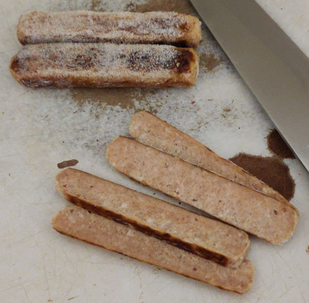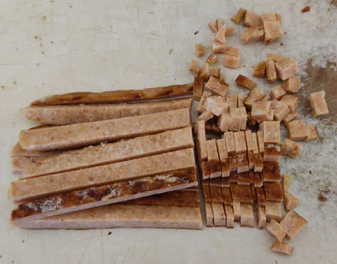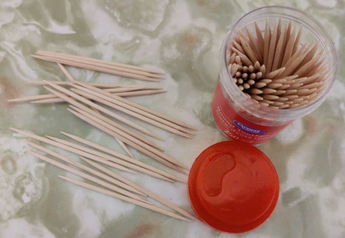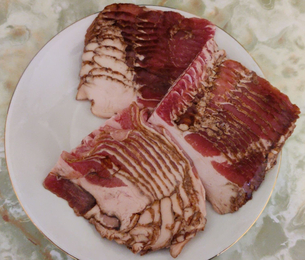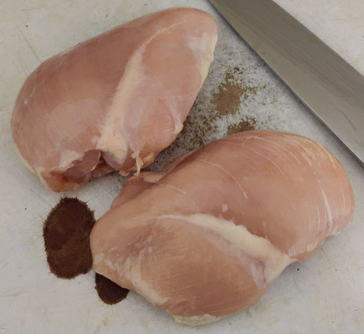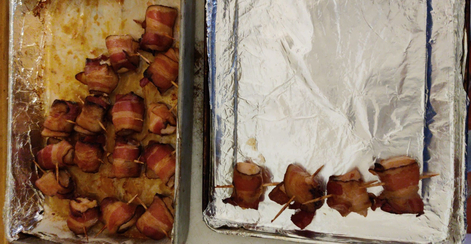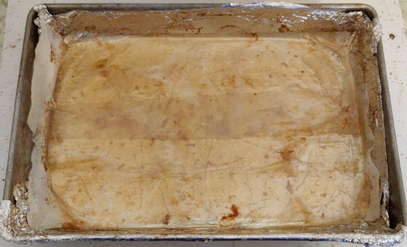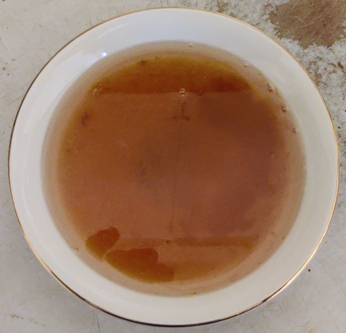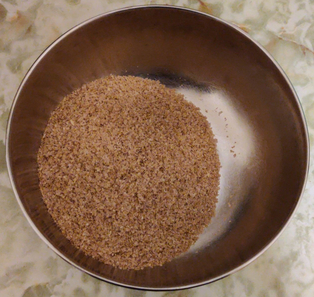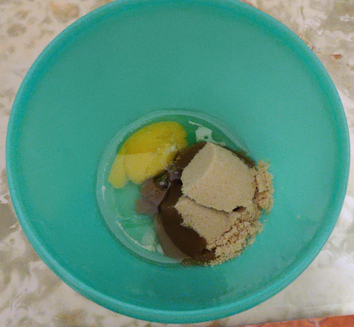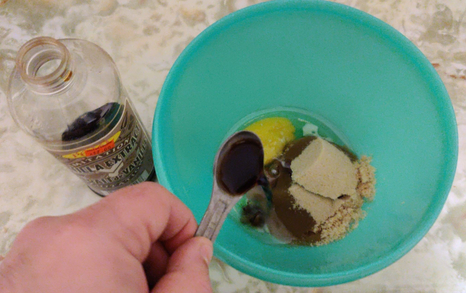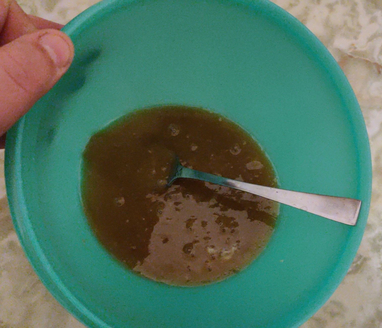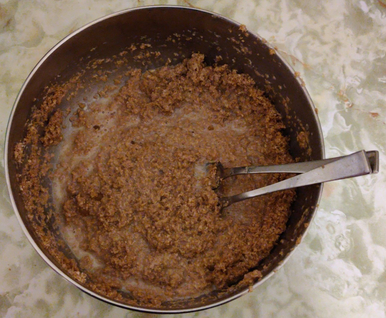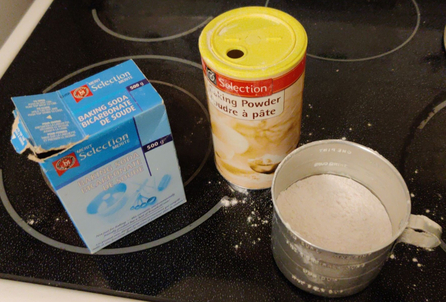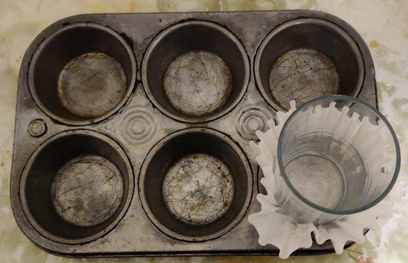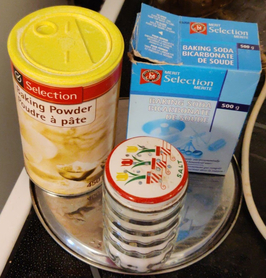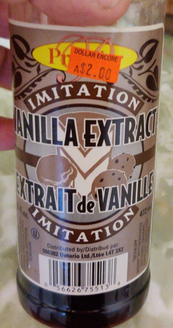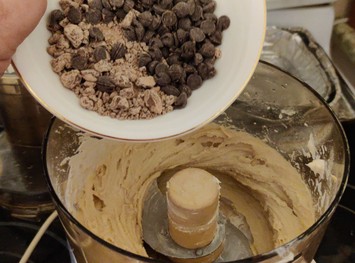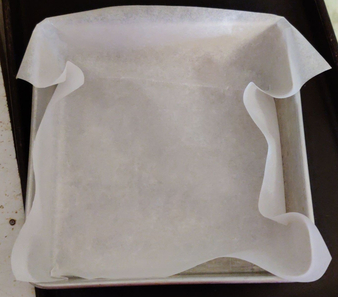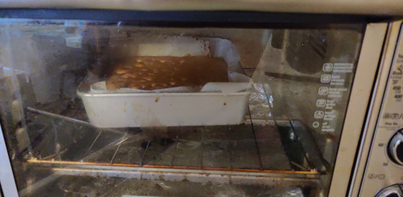This weekend’s cooking projects from my collection of recipes included more chocolate buttecrunch, more bran muffins, and the subject of this post, plain cake, with the addition of a lemon sauce as an experiment.
I came about to learning to make plain cake from scratch after I attempted to make a New York crumble cake I’d seen being made on a Martha Stewart cooking show. Not only was the cake not as expected — we were expecting mostly cake with a modest but tasty crumble crust, instead of the actual small amount of cake and a sizable crumble crust — the cake did not bake well, and I was very disinclined to try it again. The next day, I looked for a plain cake recipe on the internet and found one, which I adapted to my format.
First, two cups of flour were placed in a mixing bowl:

… to which two teaspoons of baking powder were added:

… as well as a quarter teaspoon of salt:
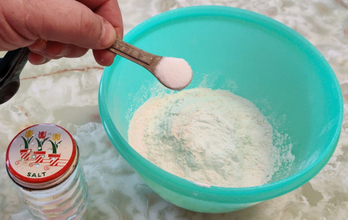
The flour, baking powder, and salt were blended with a fork:
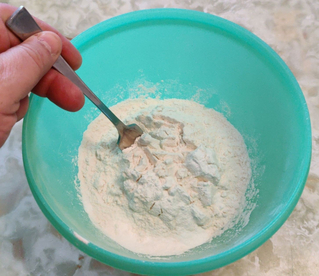
The bowl was then put aside until later.
Margarine was picked up on a piece of paper towelling:

… in order to coat the interior surfaces of the baking pan:

Then, a bit of flour was put in the pan …

… and spread around to coat the margarine:

The baking pan was also put aside until later.
In another mixing bowl, a quarter cup of shortening was added:

The shortening was creamed with an electric mixer:

A cup of sugar was added to the creamed shortening:

… and the sugar and shortening were blended:

An egg was added to the mixing bowl:

… and the ingredients were again blended:

A teaspoon of vanilla extract was added to the mix:


… and again, the ingredients were blended.
About a third of the flour mix prepared earlier, and about a third of a cup of milk, were added to the ingredients:

… and completely blended:

The previous two steps were repeated twice until all the milk and flour mix were blended into the batter.
The batter was then transferred to the floured baking pan:

… and placed in a countertop convection oven preheated to 350F:

At this point, I was getting rather thirsty, so I poured myself some iced tea, and a bottle of my homebrew, a Belgian-style brown ale, made with water from filtered, melted ice from the lake at my cottage:


Since my mom suggested that a lemon drizzle be added to the cake, first a few tablespoons of icing sugar were placed in a bowl:

… to which half the number of teaspoons of lemon juice were added:

… and the ingredients were mixed, then put aside for later:
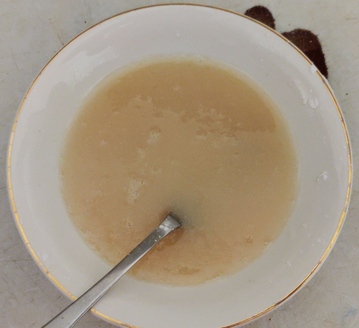
Soon, the cake in the oven was puffing up and browning:

… and was taken out of the oven after 55 minutes of baking:
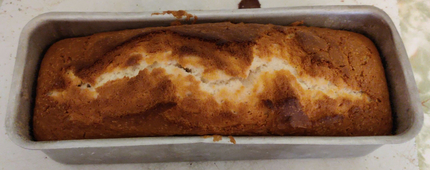
The cake was pricked multiple times with a thick needle …

… to allow for some absorption of the lemon sauce which was poured over the cake with a small plastic scoop:

… at which point, the cake looked like follows:

When cooled, a knife was used to loosen the cake around its edges in the baking pan, and the cake was taken out of the baking pan:

A few slices of cake were cut from the cake:

And, of course, the cake was yummy! And mom said “Delicious!”











